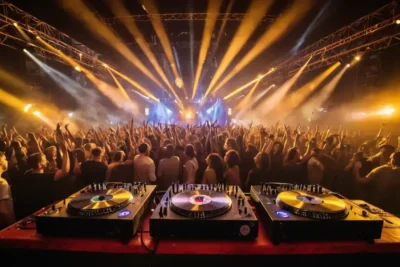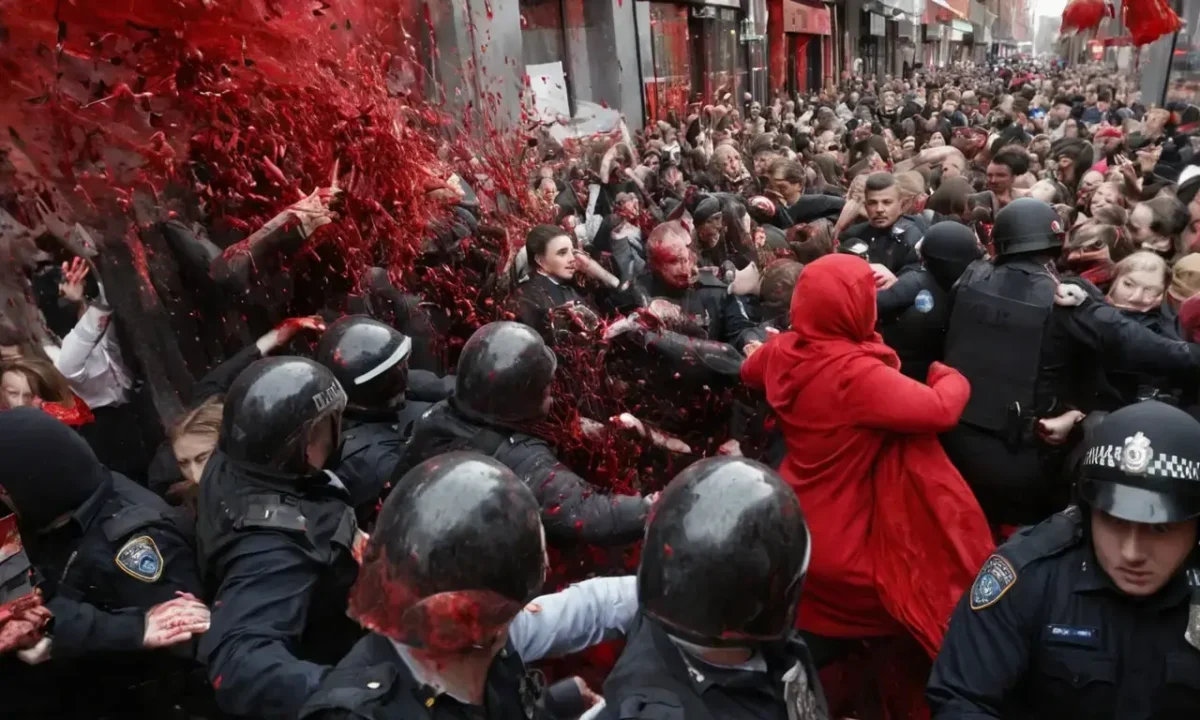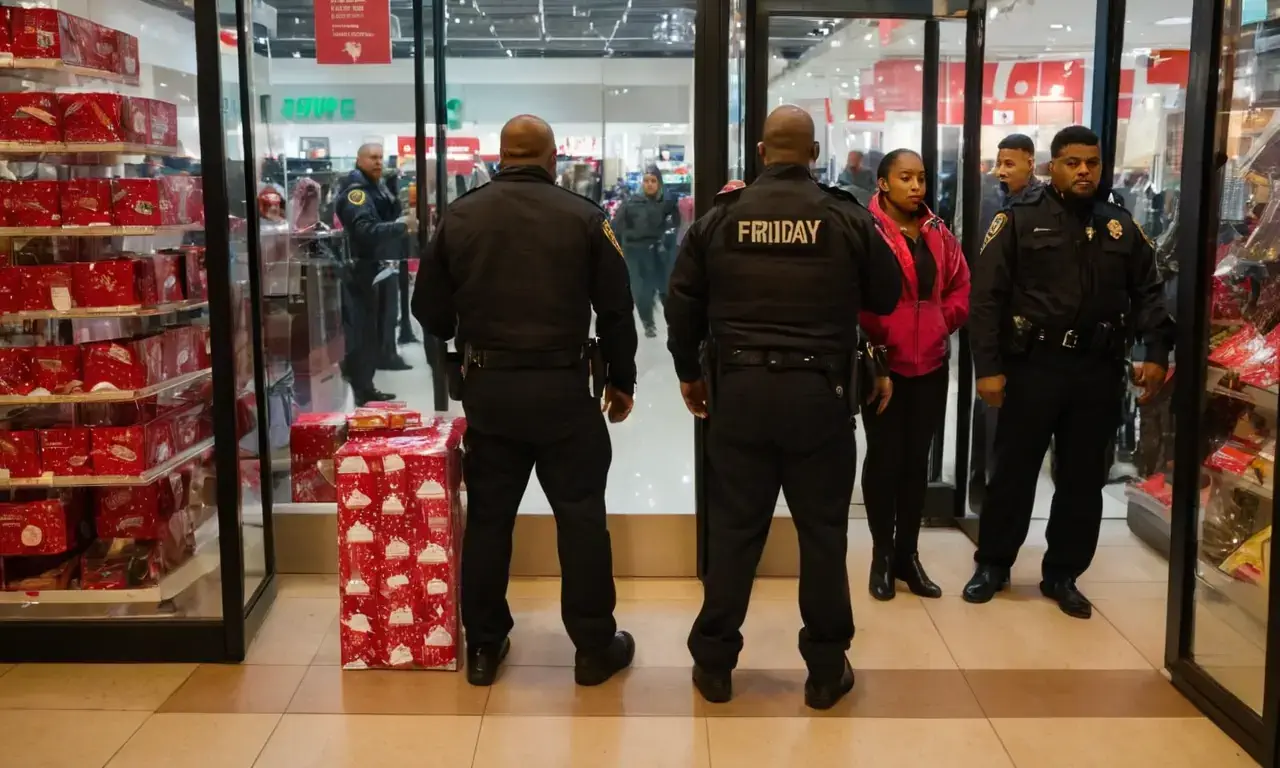
Violence Plagues Black Friday Shopping Spree

Black Friday, a day when retailers offer deep discounts and shoppers flock to stores in search of bargains, has become infamous for its chaotic atmosphere. While many people enjoy the thrill of scoring great deals, others have experienced the darker side of Black Friday.
The holiday shopping event has been marred by numerous disturbing occurrences over the years, ranging from violent altercations between shoppers to tragic incidents involving store employees. These events not only raise concerns about safety but also highlight the complexities and challenges associated with this highly anticipated shopping day.
In this article, we will delve into the worst Black Friday incidents, exploring the darker side of Black Friday and examining the factors that contribute to its chaotic nature. We will discuss various aspects, including tragic incidents, violence and shoplifting, retailers' reconsideration of participation, online shopping trends, risks vs. savings, safety concerns, historical context, statistics on violence, impact on local communities, consumer awareness, and the future of Black Friday.
The Dark Side of Black Friday
The crazy black friday phenomenon has been a subject of both fascination and concern for many years. While some view it as an exciting opportunity to snag incredible deals, others see it as a recipe for disaster. The atmosphere on this day is often described as chaotic, with shoppers pushing, shoving, and sometimes resorting to violence in pursuit of the best bargains.
The black friday craziness that unfolds in stores across the country has led to numerous reports of physical altercations between shoppers. These incidents not only reflect poorly on the retailers but also raise questions about consumer behavior and the value placed on material possessions. The intense competition for limited quantities of popular items can lead individuals to act irrationally, resulting in violent outbursts.
Moreover, the black friday horror stories that have emerged over the years serve as a stark reminder of the potential dangers associated with this shopping event. From stampedes and trampling incidents to instances of shoplifting turning violent, these tales highlight the darker side of human nature during this time. They also underscore the need for retailers to take proactive measures in ensuring customer safety.
Tragic Incidents
One of the most tragic aspects of Black Friday is the loss of life that has occurred due to stampedes and other chaotic incidents. In 2008, a worker was trampled to death at a Long Island Walmart after being caught in a stampede of shoppers. This incident sparked widespread outrage and led many retailers to reevaluate their Black Friday strategies.
Similarly, in 2012, a two-year-old child was left unattended in a car while its father went inside to buy a TV. The child's safety was compromised due to the chaos surrounding black friday horror stories. These incidents not only raise concerns about consumer behavior but also highlight the need for greater awareness and vigilance among shoppers.
The tragic loss of life on Black Friday serves as a stark reminder of the importance of prioritizing safety over savings. While many consumers are willing to take risks in pursuit of bargains, retailers must ensure that their customers feel secure and protected during this time.
Violence and Shoplifting
Violence associated with shoplifting has become an increasingly common occurrence on Black Friday. In one such incident in Holland Township, Michigan, a group of shoplifters became aggressive and drew a handgun on store employees before being apprehended by police. This event highlights the potential for violence to escalate when individuals feel threatened or cornered.
The black friday violent nature of these incidents underscores the need for retailers to implement robust security measures during this time. Stores must ensure that their staff is adequately trained in de-escalation techniques and that they have access to necessary resources, such as panic buttons and emergency response plans.
Moreover, the rise of shoplifting-related violence on Black Friday raises questions about consumer behavior and the societal pressures that drive individuals to engage in such activities. It also highlights the importance of addressing underlying issues related to poverty, unemployment, and mental health, which may contribute to these incidents.
Retailers Reconsider Participation

In response to the growing concerns over safety and violence on Black Friday, some retailers have begun to reconsider their participation in this event. Some stores have opted out of opening on Thanksgiving Day or have implemented measures to reduce the risk of violent incidents.
For instance, Walmart has introduced a new policy that allows employees to choose whether they want to work on Thanksgiving Day. This move reflects a growing trend among retailers to prioritize employee well-being and safety over profits. By doing so, these companies aim to create a more positive shopping experience for their customers while also promoting a healthier work environment.
However, not all retailers have followed suit. Many continue to capitalize on the event's popularity, often at the expense of their employees' well-being. This dichotomy highlights the complexities and challenges associated with Black Friday and underscores the need for greater awareness about consumer behavior and retailer responsibilities.
Online Shopping Trends
The rise of online shopping has significantly impacted the way consumers approach Black Friday. Many retailers now offer exclusive deals and discounts on their websites, allowing shoppers to avoid the chaos and crowds associated with in-store shopping.
This shift towards e-commerce has not only changed the dynamics of black friday horror stories but also provided an alternative for those who prefer a more relaxed shopping experience. Online shopping allows consumers to browse and purchase products from the comfort of their own homes, reducing the stress and anxiety often associated with in-store shopping on this day.
However, the convenience offered by online shopping comes with its own set of challenges. Cybersecurity threats and issues related to product availability can create new problems for consumers. As a result, retailers must ensure that they have robust systems in place to handle the increased traffic and demand during Black Friday.
Risks vs. Savings
The debate surrounding the value of black friday craziness versus consumer safety continues to be a contentious issue. While some argue that the savings offered on this day are worth the risks, others believe that the potential dangers outweigh any benefits.
This dichotomy highlights the complexities of human behavior and decision-making during Black Friday. Consumers often find themselves caught between their desire for material possessions and the need to prioritize safety. Retailers must navigate these competing interests by providing a safe shopping environment while also offering attractive deals.
Ultimately, the risks associated with black friday horror stories should not be underestimated. The potential consequences of violent incidents or stampedes can have long-lasting impacts on individuals, communities, and retailers alike. As such, it is essential for all parties involved to prioritize safety and well-being over profits.
Safety Concerns
Safety concerns are a major concern during Black Friday, with many shoppers feeling anxious about the potential risks associated with this shopping event. The crowded stores, long lines, and aggressive behavior of some consumers can create an environment that is conducive to violence or accidents.
Retailers must take proactive measures to ensure customer safety by implementing robust security protocols, providing clear instructions on crowd control, and training staff in de-escalation techniques. Additionally, shoppers should be aware of their surroundings and report any suspicious activity to store personnel.
Moreover, the black friday violent nature of some incidents highlights the need for greater awareness about consumer behavior and the importance of empathy towards others. By promoting a culture of kindness and respect among shoppers, retailers can help create a more positive shopping experience that prioritizes safety over savings.
Historical Context
The history of Black Friday dates back to the 1950s in Philadelphia, where it was initially used to describe the chaos and congestion caused by hordes of shoppers on the day after Thanksgiving. Over time, this term has evolved to encompass not only the shopping event but also the cultural phenomenon surrounding it.
Understanding the historical context of Black Friday is crucial for grasping its complexities and challenges. The evolution of consumer behavior, technological advancements, and societal pressures have all contributed to the current state of black friday horror stories. By examining these factors, we can better comprehend why this event has become a focal point for both excitement and concern.
Statistics on Black Friday Violence
According to various reports, there are an estimated 100-150 injuries per year during Black Friday, with some incidents resulting in serious harm or even fatalities. These statistics underscore the need for retailers to take proactive measures in ensuring customer safety.
Moreover, studies have shown that the majority of violent incidents on Black Friday occur within the first few hours after stores open. This highlights the importance of having adequate security personnel and crowd control measures in place during this time.
The data also suggests that certain types of products are more likely to be associated with violence, such as electronics and toys. Retailers must take these findings into account when planning their Black Friday strategies and allocating resources accordingly.
Impact on Local Communities
The impact of Black Friday extends beyond the individual retailers and consumers; it also affects local communities. The influx of shoppers can lead to increased traffic congestion, parking issues, and strain on local law enforcement.
In some areas, black friday horror stories have led to community-wide discussions about the ethics of consumerism and the value placed on material possessions. These conversations highlight the need for a more nuanced understanding of the role that Black Friday plays in shaping our society.
Furthermore, the economic benefits of Black Friday can be significant for local businesses, with many retailers experiencing increased sales during this time. However, the negative consequences, such as increased crime rates and strain on emergency services, must also be considered when evaluating the impact of Black Friday on local communities.
Consumer Awareness
As consumers become more aware of the potential risks associated with black friday horror stories, they are beginning to reevaluate their shopping habits. Many individuals now opt for alternative shopping days or choose to shop online, reducing the need for in-store visits during this time.
This shift towards greater consumer awareness is crucial for promoting a safer and more responsible approach to shopping on Black Friday. Retailers must adapt to these changing attitudes by providing clear information about their safety protocols and offering incentives for consumers who choose to shop responsibly.
Ultimately, consumer education and awareness can play a significant role in mitigating the risks associated with black friday horror stories. By promoting empathy and understanding among shoppers, retailers can help create a more positive shopping experience that prioritizes both savings and safety.
Conclusion
The complexities of Black Friday are multifaceted and far-reaching, encompassing consumer behavior, retailer responsibilities, and societal pressures. As we navigate the challenges associated with this shopping event, it is essential to prioritize both safety and savings.
By understanding the historical context, statistics on violence, and impact on local communities, consumers can make informed decisions about their shopping habits during Black Friday. Retailers must also take proactive measures to ensure customer safety while offering attractive deals.
Ultimately, a more responsible approach to Black Friday requires empathy, awareness, and a commitment to prioritizing the well-being of both shoppers and employees. As we move forward, it is crucial that we continue to address the challenges associated with this event and strive for a safer, more positive shopping experience for all involved.
Leave a Reply





Related Links